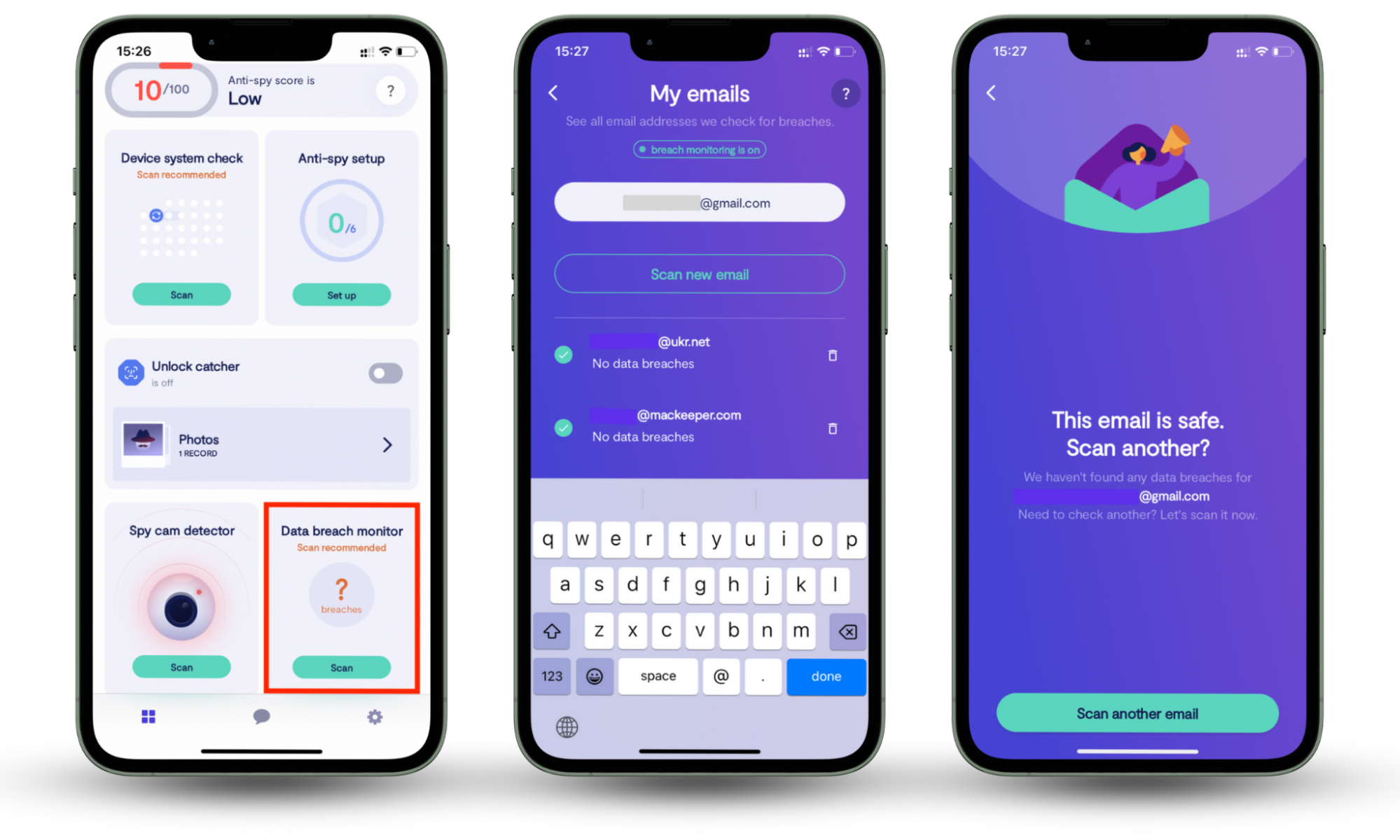Table of contents
- How to check if a website is safe in 60 seconds [Quick checklist]
- Look for the SSL certificate
- Look at the domain
- Check for a website privacy policy
- Find their contact information
- Verify their trust
- Know the signs of website malware
- Suspicious pop-ups
- Malvertising
- Phishing kits
- Malicious redirects
- SEO spam
- Search engine warnings
- What does not guarantee a website is safe
- What to do if you already shared information on a suspicious website
- Final tips: How to check if a website is safe
Checking whether a website is safe doesn’t require advanced technical knowledge, and it doesn’t need to take more than a minute. By learning how to spot common warning signs, verify domains, and use browser and reputation signals correctly, you can significantly reduce your risk of falling victim to scams, phishing, or malware.
This guide explains how to check if a website is safe using simple, practical steps that security professionals rely on every day.
How to check if a website is safe in 60 seconds [Quick checklist]
If you need to decide quickly whether a website is safe, use this checklist. It covers the most common signs of unsafe or deceptive websites and can be completed in under a minute.
- Check the domain name carefully for misspellings, extra characters, or unusual extensions
- Confirm the site uses HTTPS, but don’t rely on it alone
- Look for clear contact or company information
- Search the website name or domain with words like “scam” or “review”
- Watch for browser warnings or security alerts
- Avoid sites that create urgency or pressure you to act immediately
- Do not download files or enter personal data unless you trust the source
If one or more of these checks raise concern, it’s safer to leave the site.
Pro tip
If you’re unsure about a link from an email or message, don’t open it. Instead, manually type the official website address into your browser.
Look for the SSL certificate
Seeing “HTTPS” at the beginning of a website’s address means the connection between your browser and the website is encrypted. This protects the data you send, such as passwords or payment details, from being intercepted while in transit.
However, HTTPS does not guarantee that a website is legitimate or safe to trust. Today, most phishing sites and fake online stores also use HTTPS because SSL certificates are inexpensive and easy to obtain. Encryption only protects the connection, not the intentions of the website owner.
In the past, some browsers highlighted special validation certificates more clearly. Today, those visual indicators are limited, and users should not rely on the address bar alone to judge trustworthiness.
HTTPS is an important security baseline, but it should be treated as a minimum requirement—not proof that a website is safe to use. Additional checks are always necessary before entering sensitive information.
Expert insight
HTTPS protects your data in transit, not what happens to it once it reaches the website.
Look at the domain
One of the most reliable ways to spot an unsafe website is to look closely at its URL and domain name. Cybercriminals frequently create domains that look almost identical to legitimate ones in order to trick users into trusting them.
- A common technique is typosquatting, where letters are replaced or added. For example, a fake site may use amaz0n.com instead of amazon.com, or replace lowercase “l” with uppercase “I” in brand names. Others rely on misleading subdomains, such as secure-login.example.scam, where the real domain is the final word.
- Another red flag is a recently registered domain claiming to represent a well-known company. Many phishing sites are created only days or weeks before being used in scams.
If you arrive at a website through an email, message, or ad, it’s safer to manually type the official domain into your browser and compare it carefully before interacting with the site.
Pro tip
Focus on the last part of the domain name. Everything before it can be misleading, but the final domain extension usually reveals the true owner.
Check for a website privacy policy
A website must have a privacy policy, and it should clearly mention how your data is collected, used, and protected. Almost all websites will have one, at least for namesake, as they are obliged by data privacy laws in countries like Australia, Canada, and other European countries. A privacy policy indicates the website is compliant with the laws governing website safety. Be sure to keep an eye out for one and read it thoroughly before entering your valuable information anywhere online.
Be cautious of policies that are extremely short, vague, or filled with generic language. Some unsafe websites copy privacy policy templates without adapting them to their actual practices. Others include policies that conflict with how the site behaves, for example, claiming not to track users while running aggressive advertising or analytics.
Just because a site has a privacy policy doesn’t mean your information is always treated with care. If you’ve ever typed your email into a site that seemed off, it’s worth checking where that data ended up. Clario Anti Spy’s Data Breach Monitor can help you find out if your details have been leaked and what breaches they’ve been linked to.
Follow these steps to use Clario Anti Spy’s Data Breach Monitor and check if your information has been exposed:
- Download Clario Anti Spy app, and subscribe to create an account.
- Tap Data breach monitor.
- Enter the email address you used on the site.
- Tap Scan and wait for the results.
- Check for any breaches linked to that email.
- Follow the recommended steps to secure your accounts if needed.

It only takes a moment and could help you catch a leak early.
Find their contact information
Legitimate websites usually provide clear and verifiable contact or company information. While contact details alone do not guarantee safety, their absence or poor quality can be a warning sign.
Trusted websites often list a company name, a business email address linked to the domain, and clear ways to get support. Businesses that operate offline may also include a physical address and legal information. This information should be consistent across the website and match what appears in search results or official listings.
Unsafe or deceptive websites frequently hide behind generic contact forms, use free email services, or provide vague details that cannot be verified. Some scam sites copy addresses or company names from unrelated businesses to appear legitimate.
Before sharing personal or payment information, take a moment to check whether the website clearly identifies who operates it and how they can be contacted if something goes wrong.
Pro tip
Copy the listed company name or address into a search engine. If it leads to unrelated businesses or no results at all, proceed with caution.
Verify their trust
Some websites display trust seals or “secure” badges to signal that they use security or verification services. While legitimate businesses may use these badges, they should never be taken at face value.
Images of trust seals can be easily copied and placed on unsafe or fraudulent websites. A badge by itself does not confirm that a website has been reviewed, scanned, or verified by a security provider. In many scams, these seals are purely decorative and offer no real protection.
To verify a trust seal, try clicking on it. A legitimate badge usually links to a verification page hosted by the security provider, confirming the site’s status and details. If clicking the seal does nothing or simply reloads the page, it may be fake.
Trust seals can support other safety signals, but they should never replace domain checks, reputation research, or common-sense caution.
Know the signs of website malware
Even if a website looks professional, certain behaviors can indicate that it is unsafe or compromised. These warning signs often appear once you start interacting with the site.
- Unexpected redirects to unrelated or suspicious websites
- Pop-ups that claim your device is infected or offer urgent fixes
- Forced downloads that start without clear permission
- Browser or search engine security warnings
- Pages filled with unrelated links or spam content
- Requests for sensitive information that seem unnecessary
Some unsafe websites are not intentionally malicious but have been infected due to poor security practices. Others are designed specifically to steal data or install malware.
Recognizing the warning signs of a compromised or malicious website is your first line of defense against cyber threats. Here are some of them:
Defacements
Spotting them is easy as cybercriminals swap a site's content with their name, logo, and ideological descriptions or images.
Suspicious pop-ups
Pop-up windows with unusual or tempting claims are mainly to entice you to click and unwittingly download malware.
Malvertising
Finding malicious advertisements can be easy as they typically appear unprofessional and feature noticeable spelling and grammatical errors. For instance, they may promote "miracle" cures; celebrity imposed scandals, or feature products irrelevant to your browsing history. It is crucial to be aware that even legitimate ads can pose a malware threat.
Phishing kits
Phishing kits are websites impersonating banking and shopping websites. Their purpose is to trick users into giving away their sensitive information. They may seem legitimate, but we can surely spot some mistakes like spelling and grammar errors.
Malicious redirects
If you find your URL is getting redirected to another suspicious-looking site instead of the intended one, it is a malicious redirect. This is commonly used in conjunction with phishing kits.
SEO spam
If you see some unusual links on a site, most often found in the comments section, this is a sure indication of SEO spam.
Search engine warnings
Certain popular search engines automatically scan websites for malware, and if found, will display a warning on that site.
What does not guarantee a website is safe
Many unsafe websites appear trustworthy because they rely on familiar signals that users associate with legitimacy. Unfortunately, these indicators alone do not guarantee a website is safe.
- HTTPS encryption only protects data in transit, not how it is used
- Professional design can be copied or purchased easily
- Trust seals or “secure” badges can be faked
- Social media presence may be recently created or inactive
- Ads appearing in search results do not mean a site has been vetted
Scammers succeed by blending in. The more convincing a website looks, the less likely users are to question it.
Instead of relying on a single signal, safety comes from combining multiple checks—domain accuracy, reputation, transparency, and behavior—before interacting with a website or sharing sensitive information.
Expert insight
Many successful scams don’t break obvious rules—they rely on familiarity and trust signals users expect to see.
What to do if you already shared information on a suspicious website
If you suspect a website is compromised after you have entered personal, login, or payment information, immediate and strategic action is essential to minimize potential harm.
Here is a list of steps to secure your accounts and data:
- Change all affected passwords: Immediately update the password for the compromised account. If you re-used that password on other sites (e.g., email, banking, social media), change those immediately as well.
- Enable two-factor authentication (2FA): Activate 2FA on all available services to add a critical layer of security, making it harder for unauthorized users to log in even if they have your password.
- Monitor accounts for suspicious activity: Regularly check your accounts for unusual logins, unexpected emails or messages, or changes you didn't authorize.
- Review financial statements: If you entered payment details (credit card, bank info), scrutinize your recent bank and credit card statements. Contact your bank or payment provider immediately to report any unfamiliar charges or transactions.
- Be wary of follow-up phishing: Expect that the scammers may try to contact you again. Treat any subsequent emails, texts, or calls related to the incident with extreme skepticism, as they are often attempts to gather more information.
- Report the incident: Consider reporting the malicious site to relevant authorities or security organizations to help prevent others from falling victim. (For example, you can file a report with the FBI's Internet Crime Complaint Center (IC3) or the Federal Trade Commission (FTC) if you are in the US).
Final tips: How to check if a website is safe
Merely being able to make out if a website is safe can help protect your personal data. It is not easy or obvious to determine whether every website is trustworthy and secure, but this should not stop you from going online.
Just follow a safe approach by checking for signs of secure websites. So, before you click a dangerous link or give away any personal or financial information to a website, make sure you follow the points mentioned above.
If you’ve already entered your details somewhere that didn’t feel right, use Clario Anti Spy’s Data Breach Monitor to check if your email has been involved in a leak. It’s a quick way to catch problems early and take action before your information ends up in the wrong hands.
Read more:


